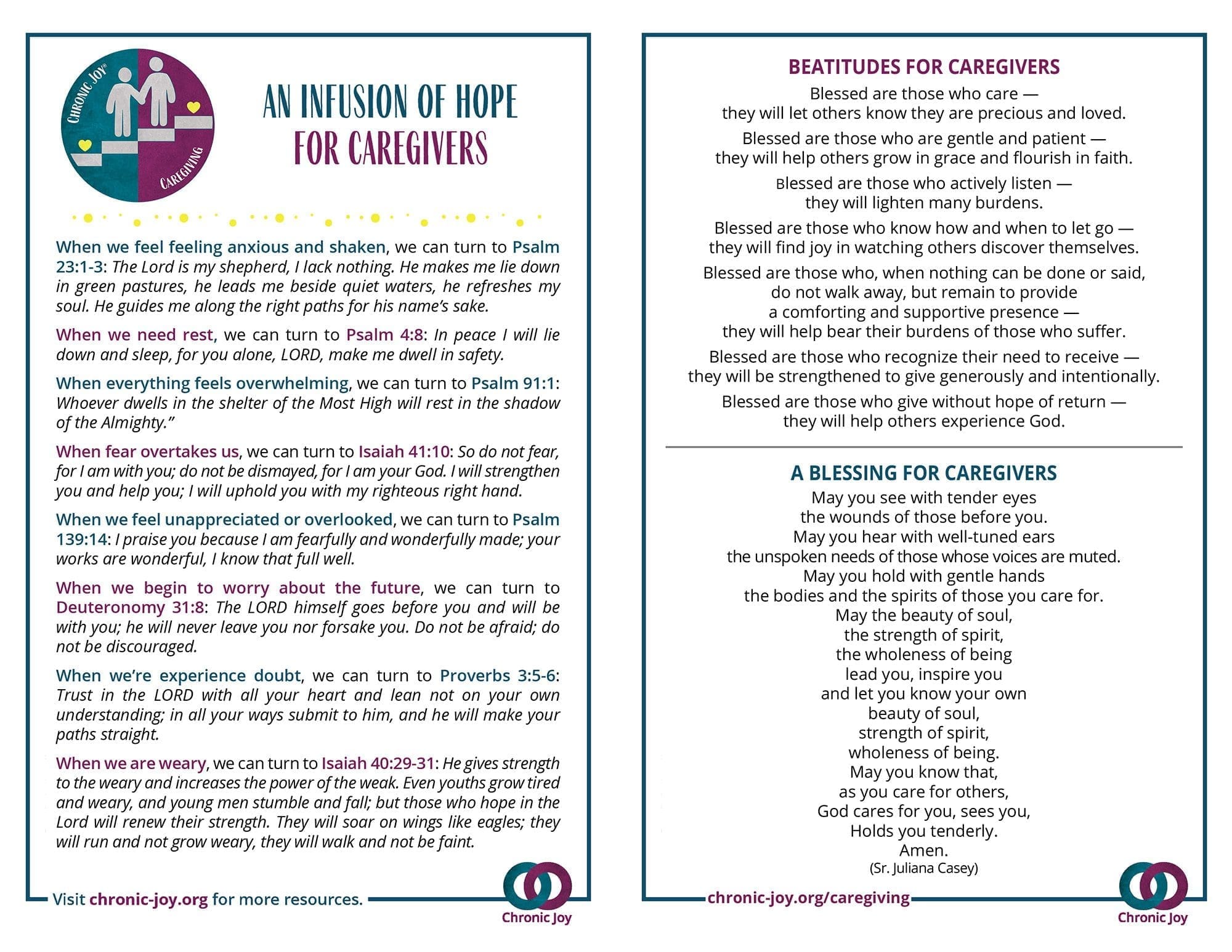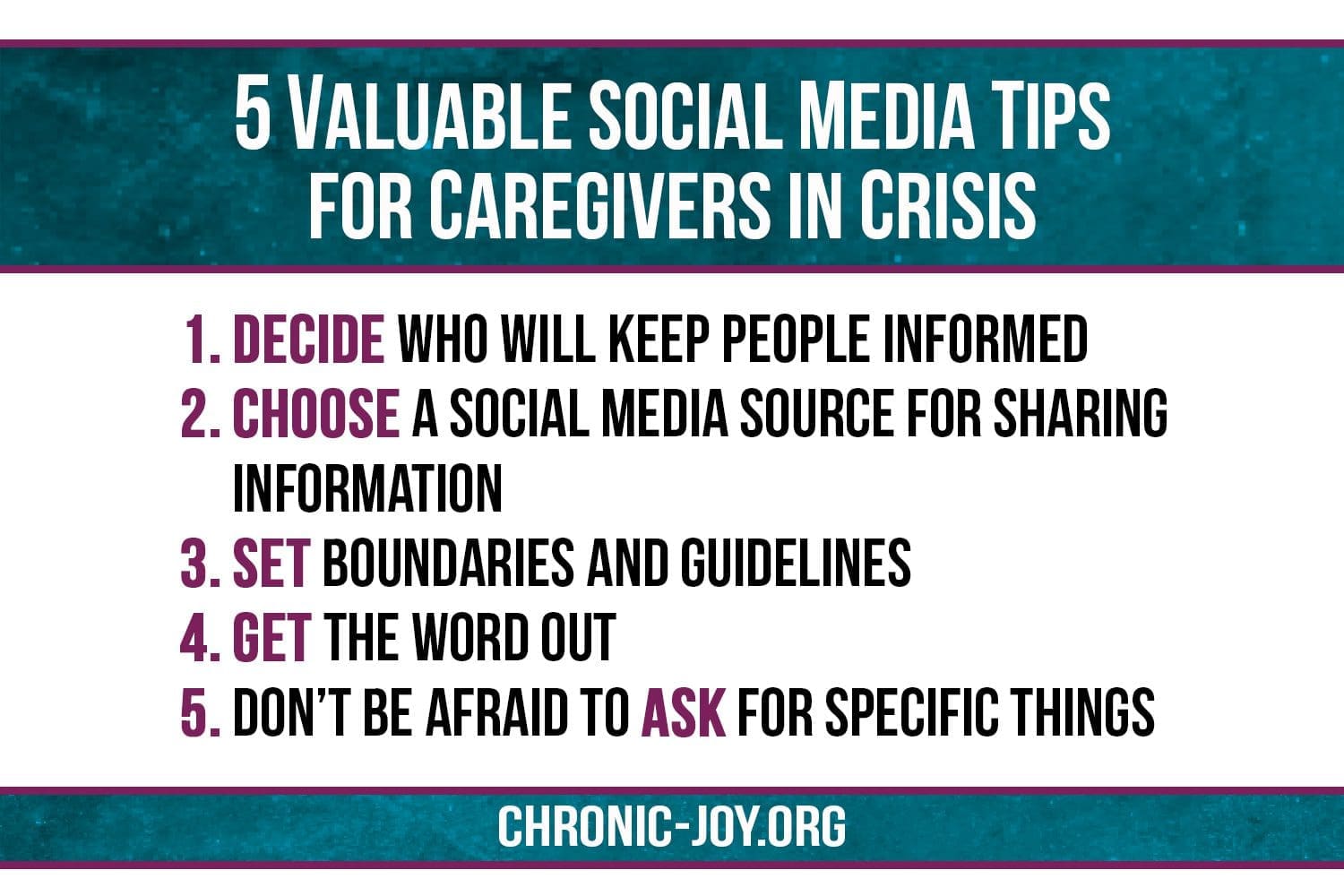Carry each other’s burdens, and in this way you will fulfill the law of Christ. (Galatians 6:2)
OTHER PEOPLE CAN BECOME YOUR MOST VALUABLE RESOURCE
When disaster strikes, how does a person decide what to share on social media and with whom to share the information?
Ultimately, the decision should rest squarely in the hands of the person who is sick. In the case of an ill minor, the decision rests in the hands of the parents. While our first impulse might be to log on to Facebook and announce, “#Cancer sucks, and Bobby has it,” it’s probably not a good idea – especially if Bobby is your husband and you haven’t discussed it with him yet. It’s even worse if Bobby is your cousin’s child, and your cousin has no idea that you’ve announced his child’s medical condition to the entire world.
When my husband, Pedro, received a diagnosis of non-Hodgkin’s Lymphoma 18 years ago, Mark Zuckerberg hadn’t even finished high school, and Jack Dorsey had yet to create Twitter or tweet about anything. Social media consisted of emails and local gossip.
When we broke the bad news to family and close friends, we did it in person or private phone calls. We emailed others who we thought would like to know about the diagnosis.
At first, it was easy to keep people informed about Pedro’s fight. Gossip and the occasional phone call did the trick. Unfortunately, when his condition worsened and we had to travel over a thousand miles away from our local support network, information sharing got complicated.
FROM MILD TO WILD
Phone calls to our local pastor and my parents (who had moved in with us to care for our young children) informed people of our prayer needs and Pedro’s ongoing condition. Unfortunately, this word-of-mouth method of passing on information resulted in rumors of Pedro’s eminent demise (through no fault of either our pastor or my parents), prompting one of my daughter’s classmates to say to my daughter, “Hey, when your dad dies, your mom can marry my dad, and then we’ll each have two parents.”
About this time, I purchased a laptop computer that I carried with me and kept hooked up to the phone line in Pedro’s hospital room (Wireless networks had only recently made their debut.). This way, I could send emails with up-to-date alerts sharing how Pedro fared.
Unbeknownst to me, many people forwarded my emails to their friends, and before I knew it, I was receiving emails from strangers in other states (even other countries!) asking to be added to the email list or just dropping me a note to let me know they were praying for Pedro.
Also, unbeknownst to me, someone back home started a fund to help our family. The fund allowed our girls to visit two times during Pedro’s illness, once on very short notice when the doctors advised that the family gather to say their goodbyes.
Social media has undeniable power and clout. It can play an important part in helping you, the caregiver, maintain your sanity and build a community of boosters who will support you during your season of caregiving since it’s much easier to write an update than to answer numerous phone calls. Family members, friends, and even strangers can become a powerful resource for caregivers.
FIVE VALUABLE SOCIAL MEDIA TIPS
1. DECIDE WHO WILL KEEP PEOPLE INFORMED
Discuss with the person who is ill and ask them what they want. A close friend who helped us during Pedro’s illness had received a cancer diagnosis herself several years ago, and she chose to act as the gatekeeper for her information (Her husband had no interest in social media, while she already had a presence online).
2. CHOOSE A SOCIAL MEDIA SOURCE FOR SHARING INFORMATION
One of my former students enlisted her entire Facebook network to cheer her on in her fight against breast cancer. Other friends from different generations have chosen to form private, invitation-only groups. The following resources should be helpful:
- Caringbridge.org offers free, personal, and protected sites where family members can visit and leave messages of support. The personal site creator can share blog posts and approve those who want to join the site. Caring Bridge also offers a support planner for caregivers to organize family and friends who wish to volunteer.
- Facebook.com offers a free social media account. Be judicious with this powerful tool, and pay close attention to privacy settings unless your loved one wants the entire world to know about his/her latest bout with vomiting. You can also use this tool to start a private group.
- Lotsahelpinghands.com is another free service offered to caregivers. Its primary purpose is to match volunteers with those in need and to help caregivers build a community to help them in their season of caregiving.
- The phone tree is an old-fashioned but effective method of communicating whereby you enlist the help of several key people who commit to calling people on a list when there is a need to ask for help, prayer, or give information. Many faith communities have a phone tree system in place. If you are part of a faith community, check with the leaders to see how the phone tree works.
- Email updates still serve as an effective way to keep key people informed.
3. SET BOUNDARIES AND GUIDELINES
In retrospect, I don’t think I would do anything differently. Neither Pedro nor I minded that people worldwide knew about his condition. It felt wonderful to know that people cared – whether Christian, Jewish, Buddhist, or atheist. Depending on the wishes of the person you care for (or, in the case of a minor, the wishes of both parents), you can limit access to the information you share. Do this by controlling who sees your posts or by including a note at the beginning of each email asking that those privy to the information not pass specific information on to others.
4. GET THE WORD OUT
Bad news travels fast, so this should pose no problems. Set up an automatic response to all emails informing people that you will be unavailable for a time. Direct them to your Caringbridge site for further information (Remember, YOU can control who joins sites or groups.). You can also prepare a statement and/or link to text back to those who text you for updates. The same goes for voicemail greetings. I hate talking on the phone, so I’d much rather leave a voicemail message asking people to check out the Internet site. This frees me up to focus my attention on my loved one.
5. DON’T BE AFRAID TO ASK FOR SPECIFIC THINGS
The power of social media in creating a support system lies in your ability to ask. Generous people will respond.
- Ask for specific things. At one point, Pedro’s white blood cell counts weren’t going up, and he had a blood yeast infection at the same time. I shot off an email asking people to pray that his white blood cell count would go up.
- Ask for volunteers. If you need someone to take you to the airport or a doctor’s appointment or babysit your children, don’t hesitate to ask.
Don’t let fear keep you from reaching out to others. If you have other ideas about creating a community of support, please share them with us by commenting below.
Previously published at Blessed (but Stressed), April 2018. Published with permission.


Anita Ojeda
Anita juggles writing at anitaojeda.com with teaching high school English and history at a small private school for Native Americans. When she's not lurking outdoors looking for and photographing rare birds in odd places, you can find her hanging out with her husband, camping with her kids, or mountain biking with her students.

An Infusion of Hope for Caregivers
God knows how overwhelming caregiving can be, how it can throw the whole balance of our lives inside out and upside down. As caregivers, we need a steady infusion of hope from God's word to do the work He has called us to do.


Recent Comments